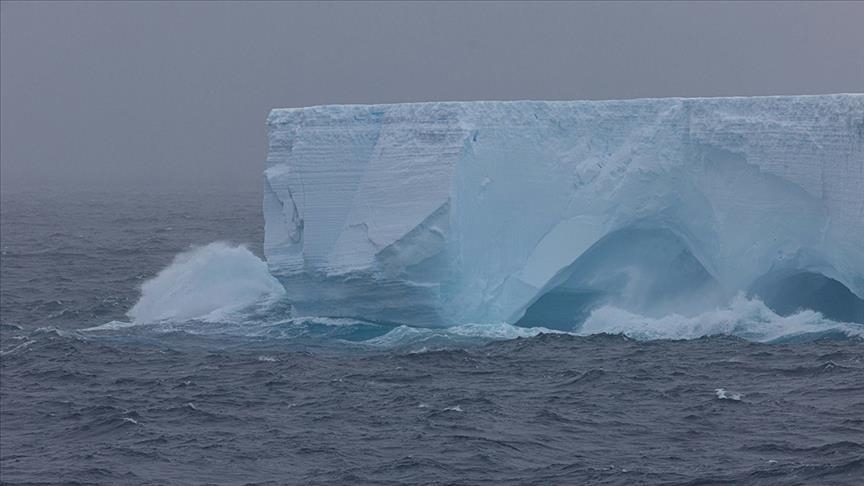World’s biggest iceberg grounds off remote South Atlantic island
A23a iceberg, roughly twice the size of Greater London, appears to be stranded and is expected to break up along South Georgia island, reports the BBC

ISTANBUL
The world's biggest iceberg, A23a, has grounded in shallow waters off South Georgia, a remote South Atlantic British island home to millions of penguins and seals.
🧊 The world's largest iceberg, A23a, grounds off South Georgia Island
📍 Expected to break up along the southwest shores, it worries fishermen and may disrupt penguins
👉 However, scientists say its melt could boost marine life by releasing nutrients https://t.co/kK4948CGcX pic.twitter.com/lwOMtV2yZr
The iceberg, which is roughly twice the size of Greater London, appears to be stranded and is expected to break up along the island's southwest shores, the BBC reported on Tuesday.
Fishermen are concerned that they may have to navigate through massive ice chunks, potentially disrupting macaroni penguins feeding in the area.
However, Antarctic scientists say the ice contains a wealth of nutrients, and when it melts, it could spark a surge in marine life.
Professor Nadine Johnston of the British Antarctic Survey compared it to "dropping a nutrient bomb into the middle of an empty desert."
"If it breaks up, the resulting icebergs are likely to present a hazard to vessels as they move in the local currents and could restrict vessels' access to local fishing grounds," the BBC quoted ecologist Mark Belchier, who advises the South Georgia government.
"The future of all icebergs is that they will die. It's very surprising to see that A23a has lasted this long and only lost about a quarter of its area," Professor Huw Griffiths said.
The offshore ecosystem’s “entire universe is being bulldozed by a massive slab of ice scraping along the sea floor," Griffiths said.
Although it is devastating for these species in the short term, he highlighted that it is a natural aspect of the region's life cycle.
"Where it is destroying something in one place, it's providing nutrients and food in other places.
"Without ice, we wouldn't have these ecosystems. They are some of the most productive in the world and support huge numbers of species and individual animals and feed the biggest animals in the world, like the blue whale," Griffiths added.
A23a's last movements
A23a, which broke away from the Antarctic coastline in 1986 and ran aground in the Weddell Sea before turning into an “ice island," was on the move again for the first time in more than 30 years.
Caught in a gigantic whirlpool in the spring, the glacier began drifting northward.
In a scientific study, the surface area of A23a was measured as about 4,000 square kilometers (about 1,544 miles), and its thickness as around 400 meters (1,312 feet).
Anadolu Agency website contains only a portion of the news stories offered to subscribers in the AA News Broadcasting System (HAS), and in summarized form. Please contact us for subscription options.

